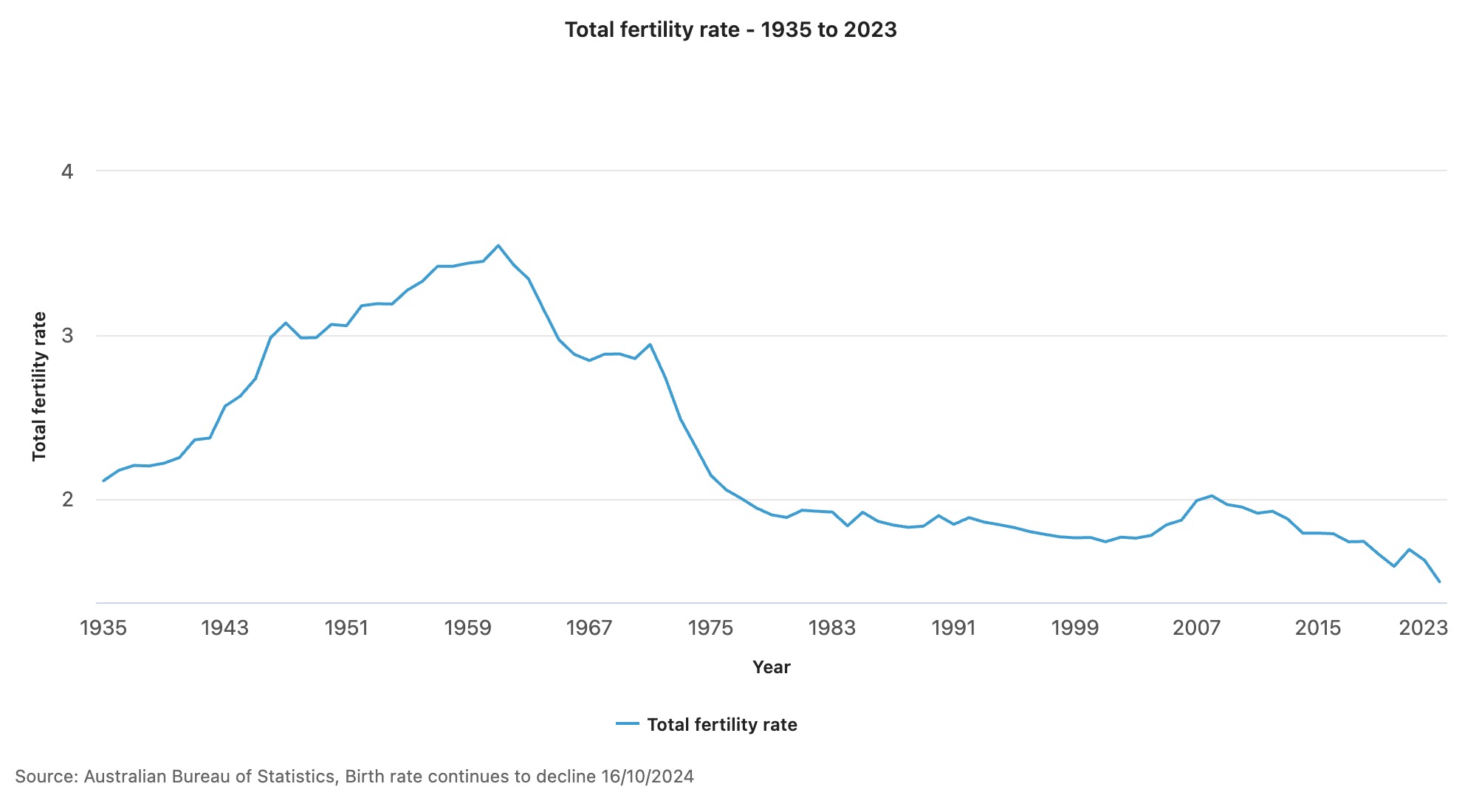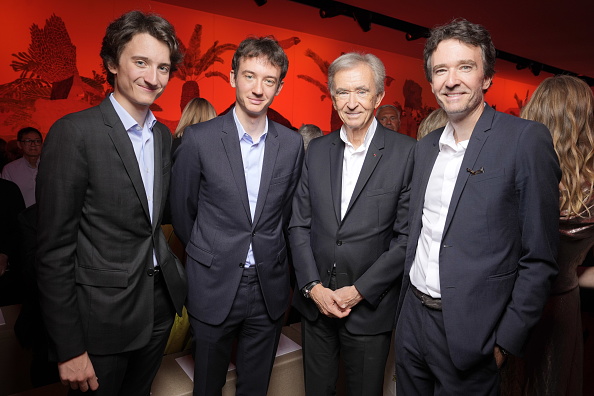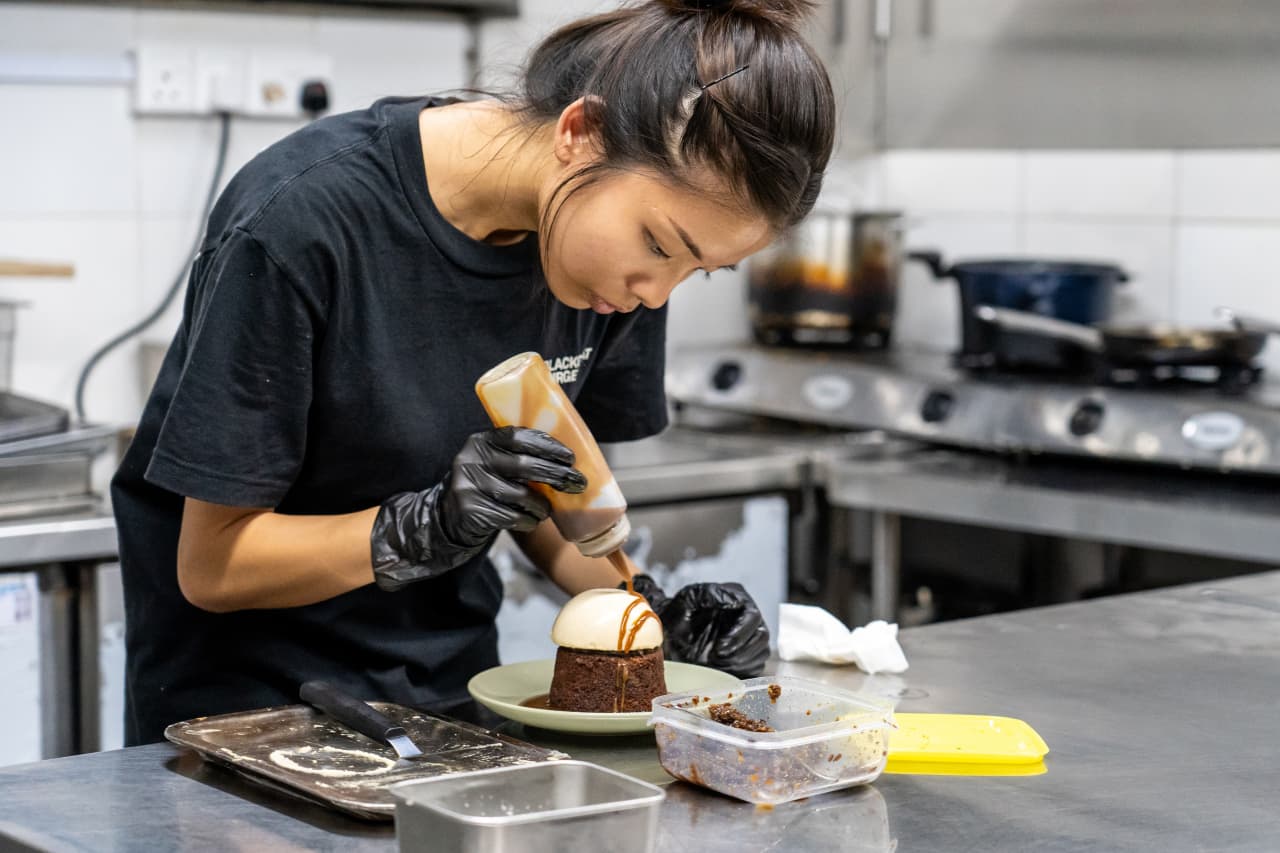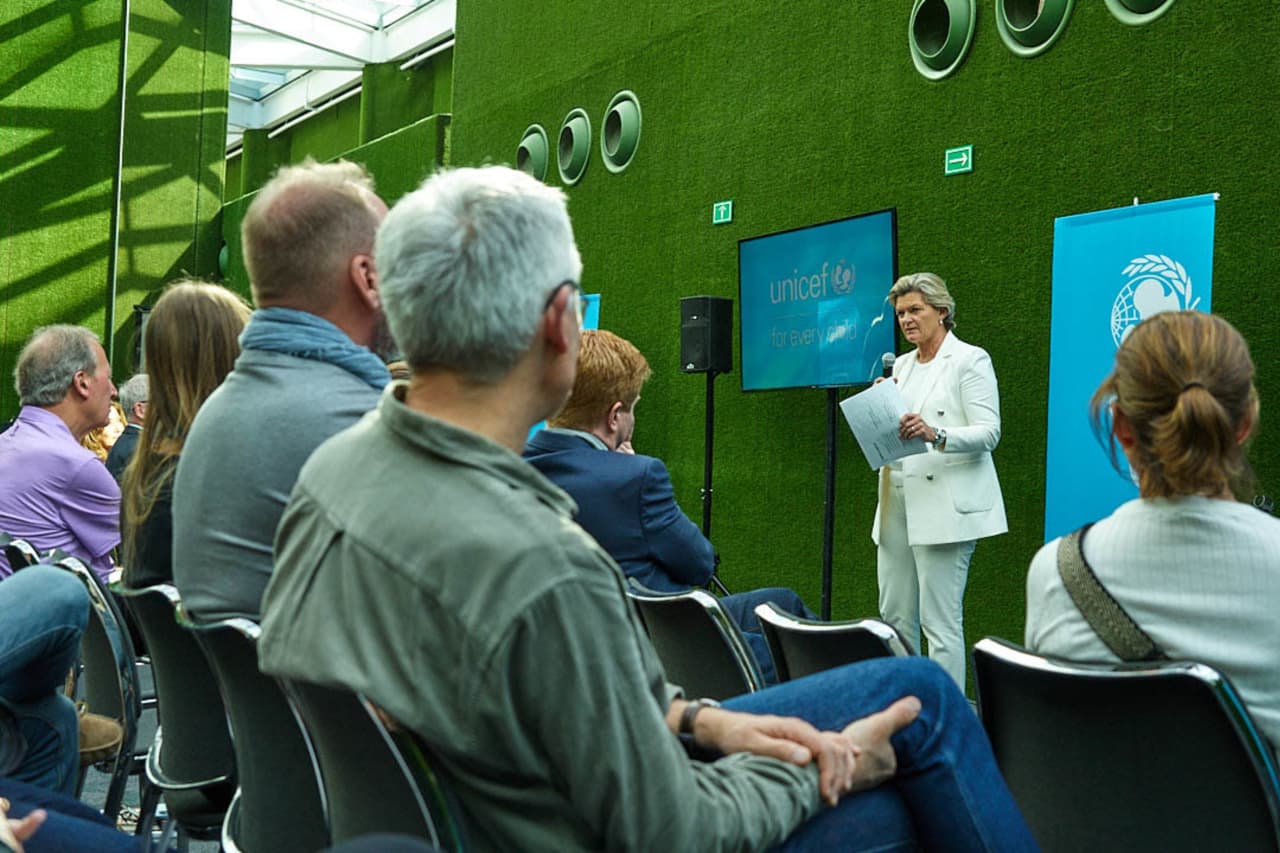Jean Arnault Has New Goals for Louis Vuitton Watches. Profit Isn’t One of Them.
The youngest son of Bernard Arnault is taking a risk at the LVMH brand: Making a more expensive product—and making it harder to find.
Jean Arnault was standing in a gilded, mirrored room of Paris’s Musée d’Orsay showing off Louis Vuitton’s newest watch model to a clutch of experts one July morning. The thin unisex watch, named the Tambour, is available in finishes including stainless steel, yellow gold and rose gold, he explains, and was the result of almost two years of work.
But the most valuable Tambour in the building wasn’t on display with the others. It was on Arnault’s wrist.
His version was made of a rare metal, tantalum. Tantalum gave the watch its gunmetal colour, though the metal’s hardness also meant that the watch took twice as much time to manufacture. This made it “insanely expensive” when he bought it, Arnault told me, though he refused to reveal what he paid.
“We’re only going to make one,” Arnault, 24, adds. “That’s it. It’s the only one.”
Jean, the youngest son of LVMH chief Bernard Arnault, has been fascinated by the opportunity in rare-materials watches for a while. The Swiss watchmaker Audemars Piguet began using tantalum in some of its watches, including the Royal Oak, beginning in the 1980s, before the younger Arnault was even born. “Incredible watches,” he says. “[Some] have rose-gold accents. Stunning.” But he says he wouldn’t feel comfortable selling a simpler, three-hand watch like the Tambour to the general public for anything near the eye-watering price he paid for his.
“Even though it costs us that much, it would be taking the client for a fool,” he says.
With Arnault, who is learning the ropes of his father’s luxury’s empire, Louis Vuitton has bet on a 24-year-old to turn itself into a player in high-end, mechanical watchmaking.
Two years ago, when he first joined Louis Vuitton’s watches division as marketing and development director, Louis Vuitton watches ran a wide gamut. They ranged from watches costing hundreds of thousands of dollars to quartz timepieces that sold for around $4,000. These are “something that could be done by a machine, almost,” says Arnault, sitting in his corner office at the Louis Vuitton headquarters in Paris’s 1st arrondissement, overlooking the Pont Neuf. On a shelf is an 18th-century French clock and a limited-edition Marc Newson–designed hourglass with blue steel nanoballs, made in collaboration with De Bethune.
Now Arnault has decided to eliminate the entry-level Tambours. His thinking was that instead of producing more affordable collections, Louis Vuitton needed to play in a different class. So the new iteration of the timepiece ranges in price from $18,500 to $52,000, putting it in competition with similar creations from the likes of Audemars Piguet and Vacheron Constantin. Nearly a third of the Tambour’s watchcase has been shaved off, making it much sleeker. Inside there is a proprietary movement, made in collaboration with Le Cercle des Horlogers, a specialist movement workshop just outside La Chaux-de-Fonds, Switzerland.
The average price of a Louis Vuitton timepiece overall will jump fivefold to over $20,000. But it’s a challenge much more daunting than adjusting the price point.
“We’re not going to make a ton of money with this,” Arnault says of the company’s strategic about-face. “It’s not going to be highly profitable at all, but it’s really about making sure that we switch the message completely.”
Building a pedigree in watchmaking—which Louis Vuitton embarked on only two decades ago—is particularly challenging. Watch fans are deeply conservative, with models that have been around for decades like the Rolex Daytona, the Omega Speedmaster or Audemars Piguet’s Royal Oak still among the bestsellers globally. Vacheron Constantin’s origins trace back to 1755, while Patek Philippe was founded in 1839. Rolex has been around since 1905.
Craig Karger, a former lawyer in New York City who collects watches and runs the blog Wrist Enthusiast, said Louis Vuitton faces an uphill battle in competing with heritage brands that focus solely on watches. “I wouldn’t personally invest 19,000 euros [about $20,300] in a steel Louis Vuitton watch, as nice as it is,” Karger says.
Louis Vuitton is hardly alone in moving upmarket in recent years, says Jeff Fowler, CEO of e-commerce watch website Hodinkee. The trend in the Swiss watch industry is clear: There are fewer watches for sale, and those that are for sale cost more—in part a reaction to the introduction of the popular Apple watch in 2015, says Fowler. The watch was so successful and ubiquitous, he explains, that it brought renewed consumer focus on timepieces, and resulted in the Swiss watch industry regrouping around higher-end products.
Founded as a trunk manufacturer by a French carpenter in 1854, Louis Vuitton has successfully expanded into categories like high fashion, menswear, jewelry and fragrances. Watches currently account for a tiny fraction of Louis Vuitton’s sales, meaning Arnault can afford to take a risk.
“Vuitton is going to have to build demand up over time,” says Fowler. “It’s not given to you.”
Jean Arnault is closely watched in the luxury industry. He is the fifth child of Bernard Arnault, the 74-year-old who built LVMH over the past four decades by buying up rival luxury firms while cultivating generations of designers. In recent years, the company has ridden a global surge of demand for luxury goods. This has cemented its position as one of the most valuable listed companies in Europe. It has also helped the elder Arnault, who is CEO and controlling shareholder, compete with Elon Musk for the title of the world’s richest person.
Growing up in the west of Paris, Jean Arnault attended a prestigious Jesuit school where one of his teachers was Brigitte Macron, now the wife of French President Emmanuel Macron. Like his siblings, he was carefully introduced to the family business, joining his father on his Saturday morning rounds to the group’s main boutiques. He would also tag along on official LVMH trips, including to China. As a teenager, however, Arnault was into cars, planes and engines. He used to tell his family that he wanted a career in Formula 1. But when he worked at the McLaren Technology Centre while studying mechanical engineering at Imperial College London, he realised it wasn’t the place for him.
“You work at the end of the day for something, which is making tenths of seconds of gains for a car to go around a track,” he says. “There’s a lot of moving parts…. I realised then that I wanted to work on [the] product as a whole.”
Bernard Arnault has always encouraged his children to pursue their interests, starting with their early roles at the conglomerate. Delphine, his oldest child, had an eye for product development, and spent some time at John Galliano’s eponymous label before joining Dior. Antoine, who loves literature, worked in the advertising department at Louis Vuitton. Alexandre brought contemporary artists to Rimowa when he was CEO. For Jean, as it was for his brother Frédéric, the passion was watches.
During his journey to McLaren in Woking, a sleepy town an hour outside of London, Jean used the time to delve into blogs about mechanical watches. He then did his fourth-year project on a component of Tag Heuer’s watches. The Swiss brand is also part of the LVMH empire and is run by his brother Frédéric, who is four years older than Jean. The two of them would frequently discuss the watch industry as well as Frédéric’s business plans—and he even allowed Jean to work on a few mechanisms.
In early 2020, Jean spent a week at Louis Vuitton’s watchmaking plant near Geneva, as he was trying to decide which of the group’s brands he would join. Michel Navas, one of the brand’s master watchmakers, recalls that Arnault spent some time taking apart and putting together a watch. At one point, Navas gave the young man a screw to clean and polish, which Arnault did with a fine abrasive. A colleague told Navas that he was going too far by assigning Arnault menial workshop tasks.
“Hang on, he’s clearly enjoying himself,” Navas answered. “He seems to love craftsmanship.”
By the time Arnault joined LVMH, following stints at Morgan Stanley and McLaren, he already had built an enviable personal watch collection. Today it includes a vintage Patek Philippe from the 1920s, a rare François-Paul Journe prototype and even a big, bulky modular timing system that was once reportedly used in a German nuclear power plant.
At Louis Vuitton, Arnault’s first public move was to establish a new watchmaking prize, which the company plans to award every two years starting in January 2024. Arnault convened a committee of watch experts and aficionados to decide on the winners, including Rexhep Rexhepi, a young watchmaker from Kosovo who founded his own label, Akrivia, in 2012.
When Arnault came to visit in early 2021, the two of them spent a couple of hours talking about watches in the atelier’s small meeting room, which looks over the garden. Rexhepi was impressed. He later agreed to a collaboration with Louis Vuitton, producing a double-sided chronograph that will be released this month. The model, limited to 10 pieces, exposes the watch’s inner workings on one side, with a white enamel dial on the other.
If Rexhepi agreed to work with him, it was in part due to the impression he’d formed back in their first meeting, when he noticed that Arnault was wearing a Journe watch.
“Oh,” Rexhepi thought, “he has good taste.”
Alongside the prize, Arnault was working on bringing high watchmaking into Louis Vuitton’s stores. Since 2011, the brand has owned La Fabrique du Temps, the atelier co-founded by Navas and Enrico Barbasini, situated in Meyrin outside Geneva. It has become synonymous with innovative, complex watch movements, but these were being used in only a handful of Louis Vuitton offerings.
On just his second day on the job, Arnault sat down for coffee near Geneva with Navas and Barbasini. “We need to stop doing quartz,” Arnault recalls them saying, referring to the fashion-oriented watches Louis Vuitton sold.
Arnault grew convinced that Navas and Barbasini were right. He pitched the idea of repositioning Louis Vuitton’s watches to his father and Michael Burke, then the brand’s CEO. Arnault wanted to upgrade the Tambour, a mainstay of the brand since 2002. He felt there were issues beyond its quartz mechanisms: It was far too chunky, for one, and its big lugs seemed outdated. Both men were cautious, he says. They wanted to ensure that a new model was ready before they signed off on any strategic shift.
By January 2022, Arnault had three prototypes of the new Tambour to show Burke and, most important, his father. Bernard Arnault has a hands-on, detail-oriented approach. He has been known to ask staff to go back to the drawing board if a design doesn’t meet his exacting standards.
A no from Arnault “has happened in the past many times,” says Jean. “It has happened to me since with products that were supposed to happen in the future but aren’t happening now…. Whether it be Michael [Burke], Pietro [Beccari, the Louis Vuitton CEO] and obviously my dad, they have a vision that we don’t have.
“Later on, once the emotions are gone and the process has been canceled, you say, ‘OK, they were right,’ ” he adds.
But this time, the meeting lasted only around five minutes. “In, out, boom—done,” the younger Arnault recalls. Bernard Arnault’s approval put the repositioning in motion. Louis Vuitton is retiring many existing models, Jean Arnault said, as well as reducing “tremendously” the number of Louis Vuitton stores that sell watches.
Since each Tambour will now be entirely handmade, Arnault says production of the Tambour would be “more in the hundreds than the thousands,” though he declined to give an exact number. He also says Louis Vuitton wouldn’t riff on the product. “We’re asking for a significant chunk of money from these people,” he says. “I don’t want to jeopardise their investment by releasing a green dial, by releasing a purple dial, by releasing a different metal. The desirability that will come from these five references will be the same over a long period of time.”
At a summer gala to celebrate the launch of the Tambour, held at the Musée d’Orsay, Arnault was surrounded by partygoers and stars, including Alicia Vikander, Michael Fassbender and Bradley Cooper, who appears in the new ad campaign to promote the Tambour. Signs of the broader Louis Vuitton brand’s reach were everywhere. Outside the museum, a giant billboard hung on the side of the museum showing Rihanna and her baby bump in a Louis Vuitton ad campaign.
“This is the pinnacle of what we can do, and the beginning of an amazing journey,” Arnault told those gathered. “Hopefully you’ll remember this moment as a historic moment for us.”
These days, Arnault splits his time between Louis Vuitton’s high watchmaking site near Geneva and the brand’s headquarters in Paris, where he tends to stay on weekends. In his spare time, he pursues what he calls his “unfortunate” passion for cars. “I’m trying to understand more,” he says. On Instagram, he sometimes shares photos of himself with his girlfriend, Zita d’Hauteville, the daughter of Eric d’Hauteville, who owns a watch brand and is also a French count, and Isabelle de Séjournet, an arts consultant. The two are pictured together traveling to Japan, or enjoying a meal together at a pizzeria in Naples. In one of her recent posts, d’Hauteville is taking a photo of herself in the mirror while Arnault is in the background, bent over double, chasing after her dog, Ovni.
Meanwhile, Bernard Arnault is never far away, sometimes asking senior executives how his youngest son is doing. He also has monthly lunches with his five children at the LVMH headquarters to talk shop and check in.
Jean encouraged his father to visit Louis Vuitton’s high watchmaking hub near Geneva. When Bernard Arnault did so, a few months after Jean had started, he was impressed, asking Navas during a tour of the facility whether he could take photos with his cellphone.
“Mr. Arnault, this is your house!” Navas said.
After the tour, Bernard Arnault sat with Jean, Navas and Barbasini for coffee. He asked Navas and Barbasini about their career history. Both men listed a host of prestigious names, including Swiss watchmaker Gérald Genta.
Arnault senior turned to his son. “Genta—we own this, right?”
Jean says he told him they did. LVMH had acquired the brand as part of its acquisition of Bulgari in 2011. Genta had released a few editions over the years since, but not much was going on with the brand.
Arnault senior turned again to Navas and Barbasini, asking them whether they’d like to bring back the brand. The two men briefly looked at each other before accepting. “Hell, yeah, we’ll do it,” Jean Arnault recalls them saying. He invited Genta’s widow, Evelyne, to visit Louis Vuitton’s watchmaking hub, and she quickly got on board with the relaunch. Hundreds of her late husband’s designs were never produced—and now they will serve as inspiration for the brand’s new creations, the first of which will be available next year.
 Copyright 2020, Dow Jones & Company, Inc. All Rights Reserved Worldwide. LEARN MORE
Copyright 2020, Dow Jones & Company, Inc. All Rights Reserved Worldwide. LEARN MORE
This stylish family home combines a classic palette and finishes with a flexible floorplan
Just 55 minutes from Sydney, make this your creative getaway located in the majestic Hawkesbury region.
Governments around the world are offering incentives to reverse a downward spiral that could threaten economic growth
The Australian birth rate is at a record low, new data has shown.
Figures from the Australian Bureau of Statistics have revealed there were 286,998 births registered around the country last year, or 1.5 babies per woman.
Birth rates in Australia have been in a slow decline since the 1990s, down from 1.86 births per woman in 1993. Declining fertility rates among girls and women aged 15 to 19 years was most stark, down two thirds, while for women aged 40 to 44 years, the rate had almost doubled.

“The long-term decline in fertility of younger mums as well as the continued increase in fertility of older mums reflects a shift towards later childbearing,” said Beidar Cho, ABS head of demography statistics. “Together, this has resulted in a rise in median age of mothers to 31.9 years, and a fall in Australia’s total fertility rate.”
The fall in the Australian birth rate is in keeping with worldwide trends, with the United States also seeing fertility rates hit a 32-year low. The Lancet reported earlier this year that, based on current trends, by 2100 more than 97 percent of the world’s countries and territories “will have fertility rates below what is necessary to sustain population size over time”.
On a global scale, the Lancet reported that the total fertility rate had “more than halved over the past 70 years” from about five children per female in the 1950s to 2.2 children in 2021. In countries such as South Korea and Serbia, the rate is already less than 1.1 child for each female.
Governments around the world have tried to incentivise would-be parents, offering money, increased access to childcare and better paid maternity leave.
Experts have said without additional immigration, lower birth rates and an ageing population in Australia could put further pressure on young people, threaten economic growth and create economic uncertainty. However, a study released earlier this year by the University of Canberra showed the cost of raising a child to adulthood was between $474,000 and $1,097,000.
This stylish family home combines a classic palette and finishes with a flexible floorplan
Just 55 minutes from Sydney, make this your creative getaway located in the majestic Hawkesbury region.






















